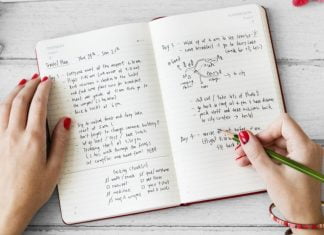The defining traits of American fashion are distinguished by an underlying sense of practicality without spending an uncia of style and elegance. And one designer who holds it all back and yet some more in the mainstream American fashion today is Diane von Fürstenberg.
In an industry where the early years of American fashion were dominated by male designers, Fürstenberg rose to become a key player who would change the way women would dress in everyday life. She is largely attributed to familiarizing an item-code known as the wrap dress: a robe-like garment furnished in a sumptuous body-hugging frame that can be easily styled and worn to form the outline of an apparel. Her idea of this dress style was appreciated for its affluence, wearability, and mundane ability to laud the female figure.

But Fürstenberg’s ascent to distinction really didn’t commence in fashion, but rather when she had her first marriage with a well-known member of German royalty and therefore became a princess who lived the high life.
The pair met when Fürstenberg was just eighteen and ultimately tied the knot in 1969 where she was consequently styled as a sovereign by the ceremony. The couple conceived two children: Alexander von Fürstenberg and Tatiana von Fürstenberg.
However marrying into a life of luxurious wealth and prosperity didn’t give her the satisfaction that she was looking for, as self-reliance and independence was still a far fetch for a queen like her. Therefore, Fürstenberg made the calculated decision to be a self-governing working woman who wanted to establish herself as a creative individual and not rely undividedly on her husband’s affluence and associations with European nobility.
She thus decided to become a fashion designer, and the rest, as they say, is fashion history.

She once said:
I feel it is my duty to make up for all the suffering she endured, to always celebrate freedom and live fully. My birth was her triumph. She was not supposed to survive; I was not supposed to be born. We proved them wrong. We both won the day I was born.
So getting back to the main plot: Fürstenberg’s incursion into fashion designing ultimately aided her to fly to New York City in 1969 so that she could make a name for herself in the emerging American fashion fuss.
A happenstance conference with the iconic Vogue editor-in-chief, Diana Vreeland, helped build Fürstenberg’s profile.
Vreeland became a fervent endorser of her work, which she declared to be absolutely smashing and going as far as to feature Fürstenberg and her apocryphal garments on the sacrosanct surfaces of Vogue.
With the consecration and publicity of the highly influential Vreeland behind her, Fürstenberg reached Ferretti back in Italy to help produce her designs.
She then made her first appearance in the New York Fashion Week, and pretty soon Fürstenberg’s vocation was conceived after manifesting her very first compilation at the Gotham Hotel in 1970.

And it was 1974 when she introduced her iconic wrap dress. The phenomenal success of her wrap dresses ultimately fastened Fürstenberg’s status as a vigour player in the industry, and it also flagged her brand’s regular expansion outside of womenswear.
As the stylist who pioneered the iconic wrap dress into the design glossary, Fürstenberg has eventually helped women everywhere to become more in a switch with their lives and take proactive measures in ensuring their independence and confidence as powerful females.
She is also observed by cultural historians as one of the fashion world’s most important figures involved with feminism.
Aside from being the chairman of the CFDA, Fürstenberg is an active philanthropist who fervently supports several social causes.

Fürstenberg happened to be a queen and still is albeit but of fashion too. Her dominance in the fashion industry remains unmatchable and her take on women empowerment is nothing but straightly inspiring.
Fürstenberg also wrote numerous titles throughout her career including two memoirs along with some major coffee table books.









